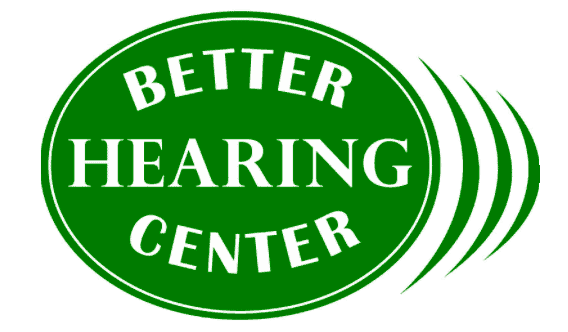- How to Protect Your Ears from Summer Noise Exposure - July 9, 2024
- Dive into Summer Water Sports with Water-Resistant Hearing Aids - June 10, 2024
- Is There a Connection Between Hearing Loss and High Blood Pressure? - May 10, 2024
Hearing aids are transformative devices that can significantly improve quality of life for individuals with hearing loss. Despite their proven efficacy, several myths and misconceptions surround hearing devices, leading to misunderstandings and potential hesitations among those who could benefit from them. Let’s walk through common misconceptions about hearing aids and look at the truths behind these remarkable devices.
Myth: Only Seniors Need Hearing Aids
Reality: Hearing Loss Knows No Age
Contrary to what you might think, people of all ages can experience hearing impairment. From infants to young adults to older adults, hearing loss can result from various factors such as genetics, noise exposure, or medical conditions. Therefore, the need for hearing aids is not confined to a specific age group.
Myth: Hearing Aids Are Bulky and Unsightly
Reality: Sleek, Discreet, and Stylish Designs
Modern hearing aids boast sleek, discreet designs, and many are virtually invisible when worn. Manufacturers prioritize aesthetics, offering a range of styles to suit different preferences. From in-the-ear models to those that sit discreetly behind the ear, individuals can choose hearing aids that align with their comfort and style preferences.
Myth: Hearing Aids Amplify All Sounds Equally
Reality: Advanced Technology offers Personalized Amplification
Contemporary hearing aids utilize sophisticated technology that goes beyond simple amplification. They are designed to distinguish between different sounds, prioritizing speech and reducing background noise. This advanced processing ensures a more natural listening experience, allowing wearers to engage in conversations with clarity.
Myth: Hearing Aids Restore Hearing to Normal
Reality: Enhancing Auditory Function
While hearing aids significantly enhance auditory experiences, they do not restore hearing to its normal state. These devices amplify sounds, making them audible to individuals with hearing loss. Managing expectations is crucial, as hearing aids aim to improve communication and quality of life rather than fully restoring original hearing capabilities.
Myth: One Size Fits All
Reality: Customization for Individual Needs
Each person’s hearing loss is unique and requires a personalized approach. Hearing aids are not a one-size-fits-all solution. Hearing health specialists conduct thorough assessments to determine the type and degree of hearing loss. We tailor the selection and programming of hearing aids to address individual needs.
Myth: Hearing Aids Are Uncomfortable
Reality: Comfortable and Adjustable
Modern hearing aids are designed with user comfort in mind. They come in various sizes and styles, allowing wearers to choose the option that feels most comfortable for them. Additionally, hearing health specialists work closely with individuals to ensure proper fit and make any necessary adjustments for optimal comfort.
Myth: Hearing Aids Are Only for Severe Hearing Loss
Reality: Beneficial Across All Degrees of Hearing Loss
Hearing aids are not exclusive to severe hearing loss; they are beneficial for various degrees of impairment. Whether someone has mild, moderate, or severe hearing loss, these devices can be programmed to address specific needs and improve overall auditory function.
Myth: Hearing Aids Are a Sign of Weakness
Reality: Empowering Individuals and Normalizing Hearing Health
Wearing hearing aids is a proactive step toward better hearing health, not a sign of weakness. Acknowledging and addressing hearing loss demonstrates resilience and a commitment to maintaining an active and engaged lifestyle. As societal perceptions evolve, using hearing aids becomes a normalized and empowering choice.
Myth: Hearing Aids Are Too Expensive
Reality: Varied Price Range and Value
While the cost of hearing aids can vary, their value in enhancing daily life is immeasurable. Many factors contribute to the pricing, including the level of technology, features, and the provider’s services. It’s essential to view hearing aids as an investment in one’s well-being and overall quality of life. We’ll work with you to find hearing aids that fit your budget and hearing needs.
Myth: Hearing Aids Solve All Communication Challenges
Reality: Supplementing Communication Strategies
While hearing aids play a crucial role in improving communication, they are part of a broader strategy. Individuals with hearing loss may benefit from adopting communication strategies, such as face-to-face conversations, minimizing background noise, and using visual cues. Combining hearing aids with effective communication techniques can boost overall communication.
Find Your Next Hearing Aids
Did you learn anything new about the myths and realities of hearing aids? These devices are not just tools for amplifying sound; they are instruments of empowerment, fostering improved communication, social engagement, and overall well-being. Hearing aids are modern, sleek, and personalized solutions that will help you navigate the world with newfound clarity and confidence. Visit us today to learn more.

